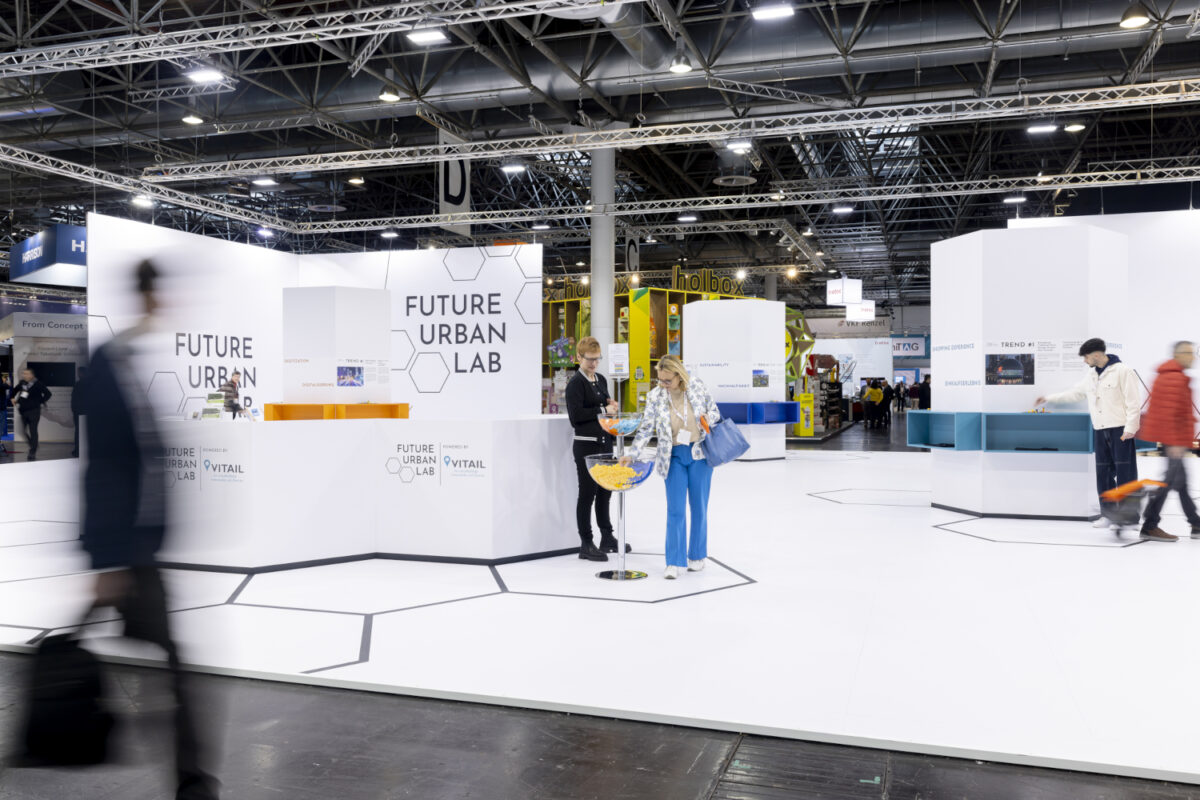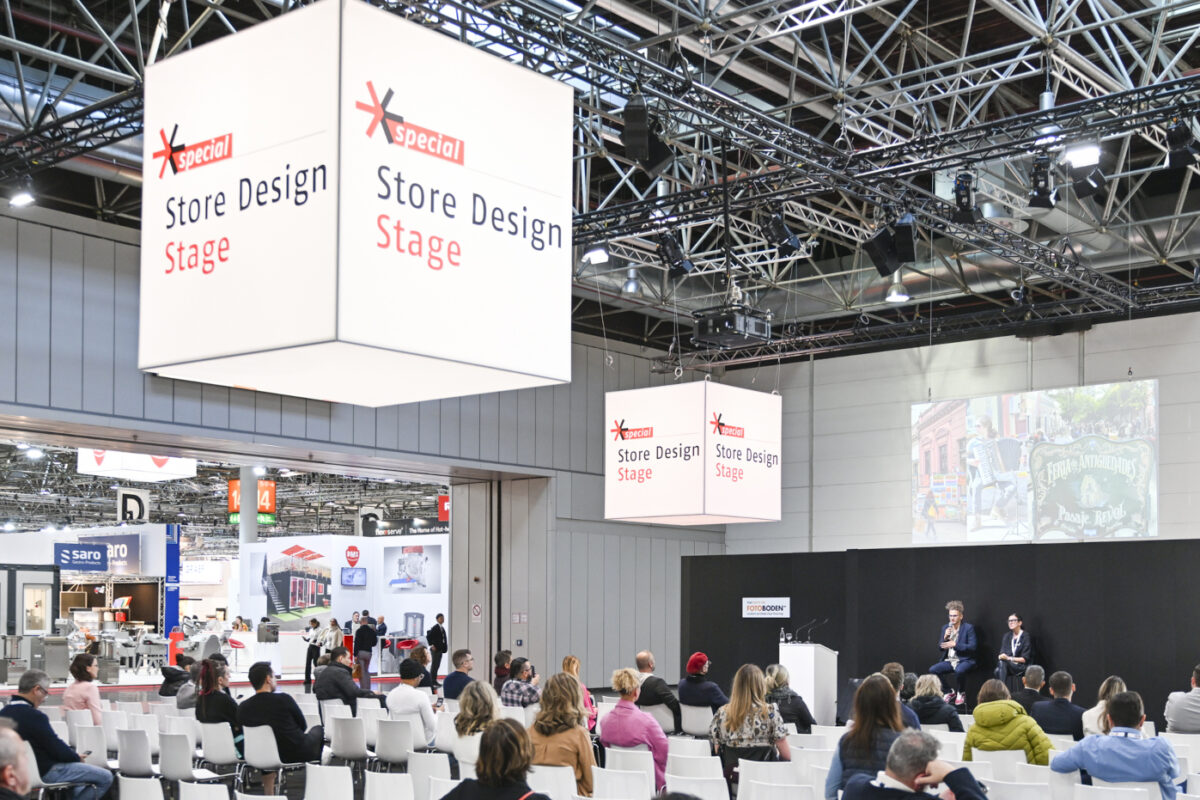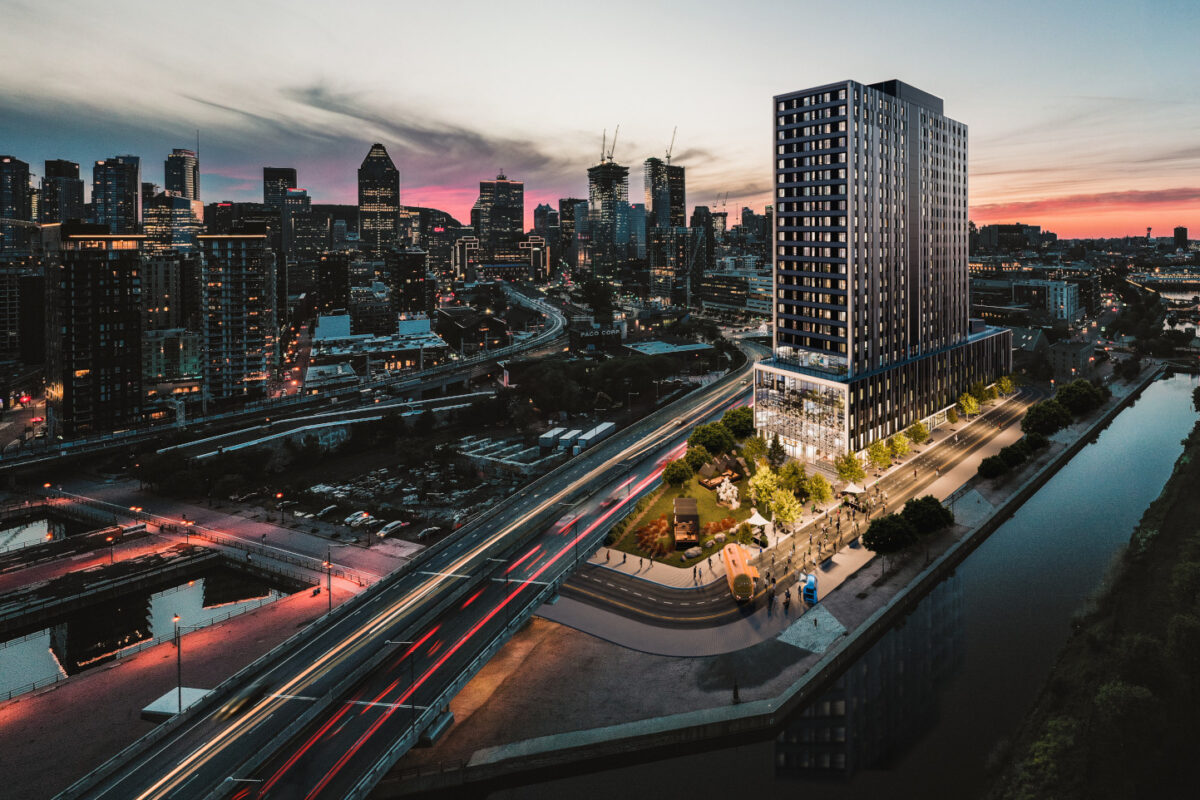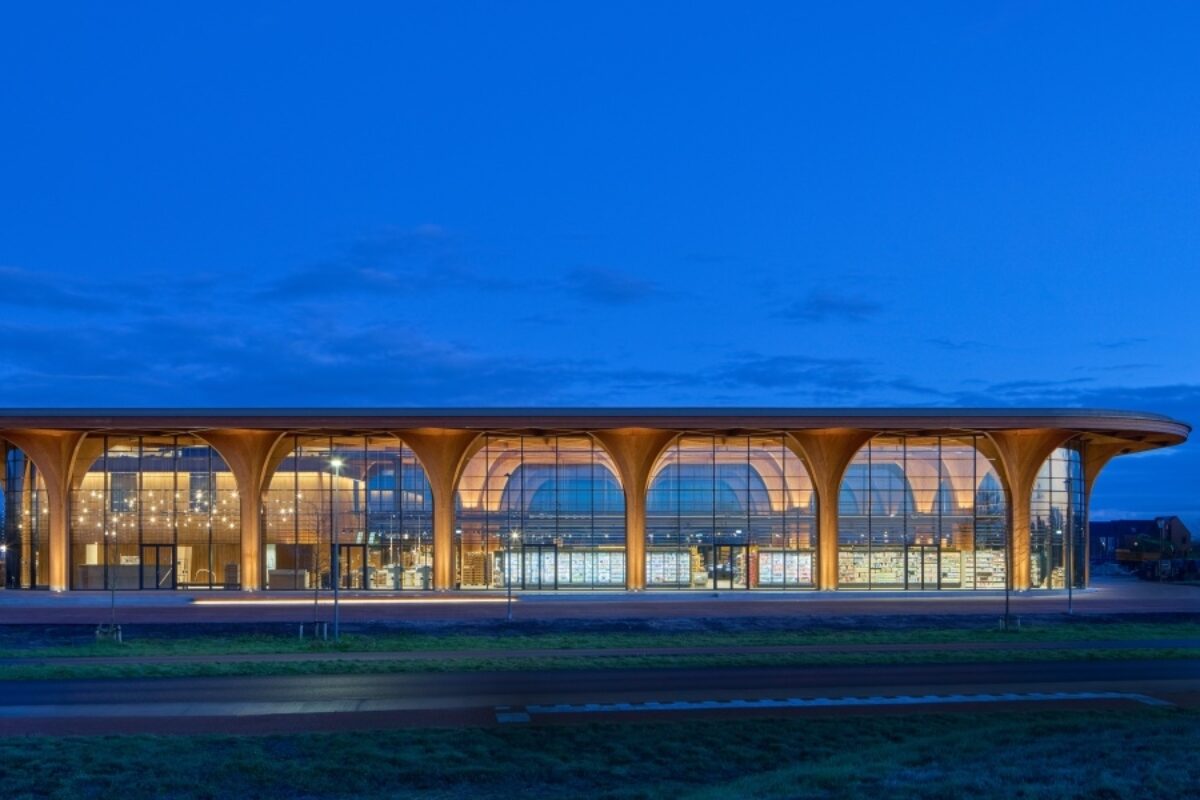A look at lifestyles, brand experience spaces and cooperatives
Ilona Marx (exclusively for EuroShop.mag)
How will the coronavirus pandemic impact the retail industry? How will it affect the e-commerce sector in the years to come? What are the dangers of restructuring practices? What opportunities does this rapidly evolving situation offer? Even before the pandemic, the retail industry had already faced many challenges and upheaval. The Covid-19 crisis has become a catalyst for change and only magnified the pressure. We consulted three experts to answer the most urgent questions: Rainer Zimmermann is a Professor of Strategy, Design and Communication and Co-founder of the Retail Design course at the Düsseldorf University of Applied Sciences (HSD). As Managing partner of Liganova, Dr. Marc Schumacher steers the Stuttgart-based brand retail company toward success. Architect Vésma Kontere McQuillan is a professor and Head of the ArchCommLab research group in the Faculty of Communication and Design at the Kristiania University College in Oslo, Norway.
The tipping point

Rainer Zimmermann is a Professor of Strategy, Design and Communication and Co-founder of the Retail Design course at the Düsseldorf University of Applied Sciences (HSD).© hauser lacour
First things first – there are many key points these experts agree on. There is broad consensus that the recent crisis has accelerated many developments. Dr. Rainer Zimmermann expects a further decline in non-food retail business in urban areas with a population under 50,000. These communities already account for two-thirds of e-commerce sales volumes in Germany. The coronavirus also had a hand in this trend. “We will only continue to have vibrant inner cities if policy-makers, retailers and citizens create ‘public-private partnerships’ to sustain local supply chains,” predicts Zimmermann. “Bigger cities will maintain a variety of brick-and-mortar retail stores, but the previous models will increasingly make way for hybrid retail formats. The retail food industry will continue to grow with no disruption and increasingly integrate gastronomic, home and living options. We have reached peak urban densification. Promoted by the coronavirus pandemic and work-from-home settings and fast-tracked by retail rents, the next two years will see a revival of suburbanization and population shift from rural to urban areas.”

As Managing partner of Liganova, Dr. Marc Schumacher steers the Stuttgart-based brand retail company toward success. © Liganova
Dr. Marc Schumacher sees trends that support this process. “The last three months have made us reach a tipping point. For the first time, many people now had the time and incentive to buy groceries online, stream movies, do an online yoga class, and order food.” A so-called “systemic shock” often prompts disruption and means upheaval. According to Schumacher, the SARS outbreak was the tipping point that promoted the enormous success of China’s biggest online commerce company Alibaba. “The coronavirus crisis will put brick-and-mortar retailers under increasing pressure in the medium term and it underscores the turmoil the industry has faced for the past 15 years.” Zimmermann agrees: “In 2020, the share of total e-commerce sales is likely to surpass 20 percent for the first time. Having food delivered to your home is the new normal. Food delivery services see a surge in demand and increased automation.” Yet the pandemic has also caused a trend reversal and launched a re-localization of supply chains. “There is a shifting emphasis on the reliable provisioning of products from local sources,” says Zimmermann.
Back to nature

Architect Vésma Kontere McQuillan is a professor and Head of the ArchCommLab research group in the Faculty of Communication and Design at the Kristiania University College in Oslo, Norway. © Iiro Piipponen
Will the coronavirus pandemic also change our lifestyles in the future? Professor Vésma Kontere McQuillan points to the long-lasting impact of working from home. “The new mix of private and public space will change the different types of interior design styles in our homes. Apartments will now also integrate workspaces. Housing will feature more balconies and patios, and residential areas will boast more green spaces.”
Professor Rainer Zimmermann from Düsseldorf also believes in the return to nature trend but takes this one step further. “I believe this will also accelerate the ongoing rural revival trend.” He adds that it is high time for people to escape to the countryside after 50 years of rapid urbanization and urban densification. In cities, innovation fatigue has settled in and all have eerily fallen prey to a sameness. Cost of living expenses are higher, too. “During the COVID-19 pandemic, many companies were initially concerned, yet found that employees who work from home are actually more productive in this setting. I can live in the Taunus district, if I only have to commute to Frankfurt city center for work three days a week. Metropolitan areas and the periphery will benefit from urban restructuring in the coming years.”
He sees danger in predatory capitalism as was recently prominently displayed by Clemens Tönnies in Germany (German food industry giant Tönnies uses subcontracted migrant workers, who live in cramped housing. A recent coronavirus outbreak in a meat factory of Tönnies has prompted a shutdown of the town of Gütersloh and nearby surrounding areas). Zimmerman suggests that policy-makers must get a better handle on the excesses and injustices of capitalism, as this might otherwise prompt a declining trust in the system as a whole. “Without consumer confidence, there is no positive buying climate,” the retail expert warns. Consuming at the expense of others is becoming increasingly unattractive. “I think the coronavirus crisis has raised the public’s awareness and might even have triggered a rethinking of ethical challenges. The retail industry will not be successful unless it builds more responsible and sustainable behavior patterns.” Schumacher likewise sees the established organizational retail structures at risk thanks to the reduced need for corporate office spaces and the resulting decline in daily big-city commuters over the next three to five years.
Is the crisis a moment of opportunity?
What about opportunities that result from this scenario? Schumacher feels confident that the crisis could bring skilled crafts and trade back into city centers. “Falling rents for office spaces will allow small independent businesses to move back from the periphery of industrial parks.” Zimmermann shares a similar view. “The fact that now everyone can plainly see that a more-of-the-same approach is no longer working will open up big opportunities. Horizontal scaling has reached its maximum capacity, the future of added value is vertical scalability. Fast-food chains are already monetizing their customer relationships and are offering new products such as dating apps. The business model must wrap around the customer. The notion of the retailer who buys and resells for a profit makes way for algorithmic retailing. The future of retail is curation. The retail curator carefully selects, creates, and produces products and services for his/her customers – drawing from different product and service categories. Simply put, “This is a chance to drastically change the retail job description and create a future-proof setup,” Zimmermann sums up.
Environmentally friendly and user optimized
What is McQuillan’s take on how the coronavirus crisis will affect retail design? The architect predicts pragmatic changes: Designers will create innovative solutions for door openers, while retailers are going to reduce the number of in-store touchpoints. Digital tools and resources will see another surge in demand. More than ever, customers will appreciate the importance of in-person encounters and interaction. Stores will find ways to incorporate the waiting situation outside the store into their design concept.
According to Zimmermann, the next 20 years won’t see many new retail store construction. It’s a similar situation we see in the cruise ship market. “We already have more resources than we will ever need again.” However, he predicts that the market for commercial properties and short-term office spaces will continue to grow. “If I were in the shopfitting business, I would also delve into market opportunities for cabins, tiny houses, and mobile homes. This market is increasing at a rapid pace,” he recommends. Zimmermann believes that by 2030, the cityscapes of communities with a population of fewer than 50,000 residents will resemble an outside living room for its residents and will be car-free and green. Public transport is tightly scheduled and powered by renewable sources, while bikes will become the most important means of mobility in cities. Vésma Kontere McQuillan agrees and predicts, “Our cities will become more environmentally and user friendly in the coming years.”
The next decade
In the medium term, Zimmermann paints an overall optimistic picture but points to some restrictions. “Cities in 2030 will offer attractive cultural highlights and feature a multitude of restaurants, cafés, clubs, and pubs, but will also boast carpenters, cobblers, and tailor shops, which can now afford commercial retail rents because they are subsidized and funded by the local city. Apart from two of the Big Four’s ultramodern grocery stores, there will be grocery cooperatives (co-ops) that consist of local food producers and businesses who – supported by policy-makers and citizens – will ensure the continuity of the local non-food supply and diversity in the city’s retail portfolio. The cooperative occupies several buildings that were formerly used by local retailers, acting as a hub on the brick-and-mortar supply side. Online orders by residents are automatically routed to a central pickup location, ensuring that delivery vehicles and trucks don’t congest the city center. The cooperative has a dynamic product portfolio and is based on regular, local online voting. The majority of residents decide on licenses for non-food retailers.” This version of a controlled market economy could save downtowns and serves a public benefit.
Dr. Marc Schumacher sees great potential for brand experience spaces and an interesting tenant mix in large cities, which comes by way of cultural and gastronomic facilities that are adjoined by showrooms. Retailers might even consider charging entrance fees to access the showrooms. Guests would be given the chance to experience and test the latest products. The showrooms act as meeting rooms and event spaces. “We live in an omnichannel world where anything is available anytime. However, channels with a physical presence will no longer offer a transactional function,” explains Schumacher. This trend is already underway at stores such as Breuninger and KaDeWe. These department stores already host up to 650 events per year as retailers increasingly turn into program directors. Here is yet another example: Why is Amazon buying movie theater chains in the U.S.? To give its fans a hub and go-to place! And who knows? Maybe Amazon will soon also run our city centers.” A utopian version of the world that German retailers clearly would very much like to compete with and counteract.




















